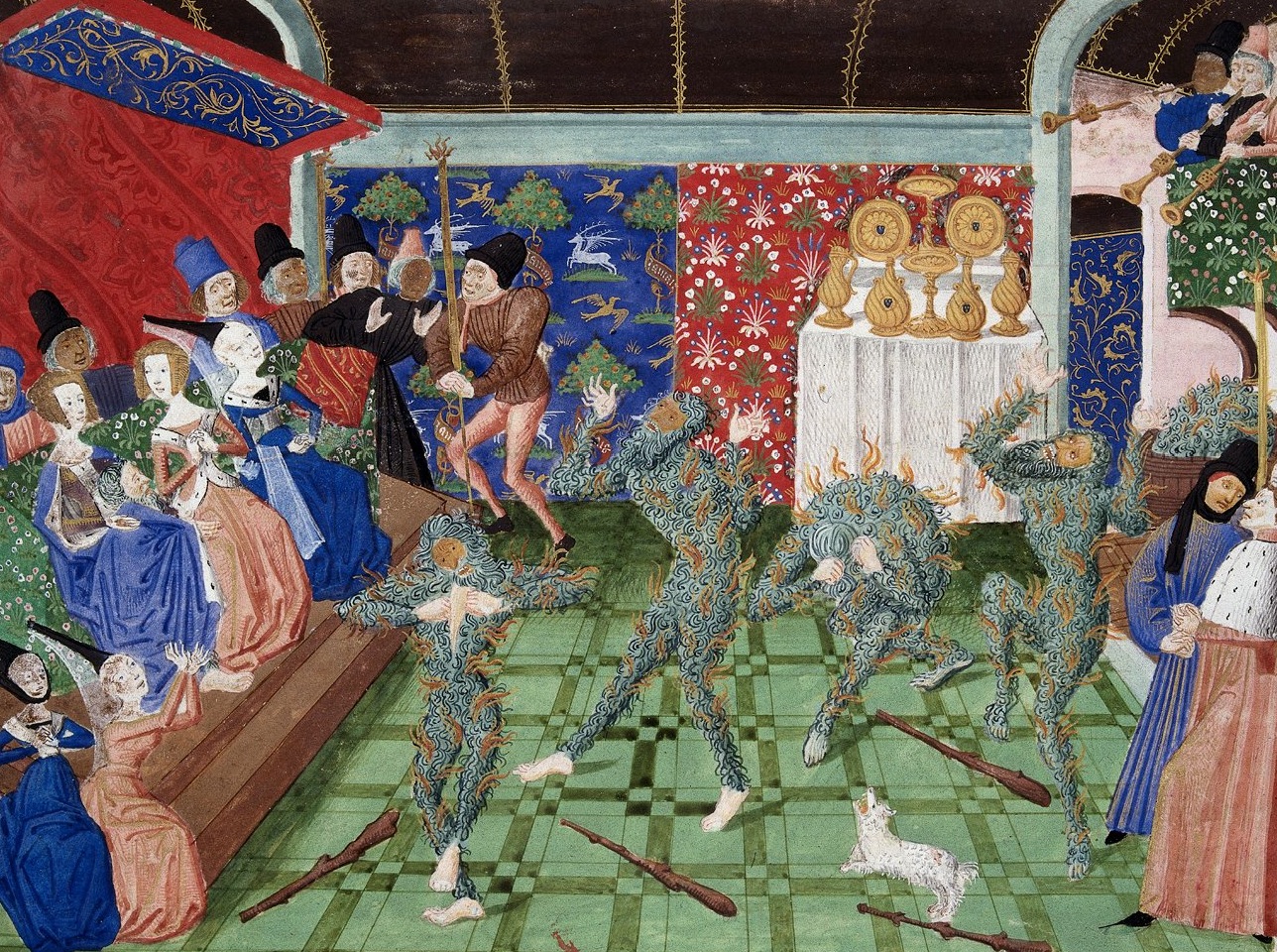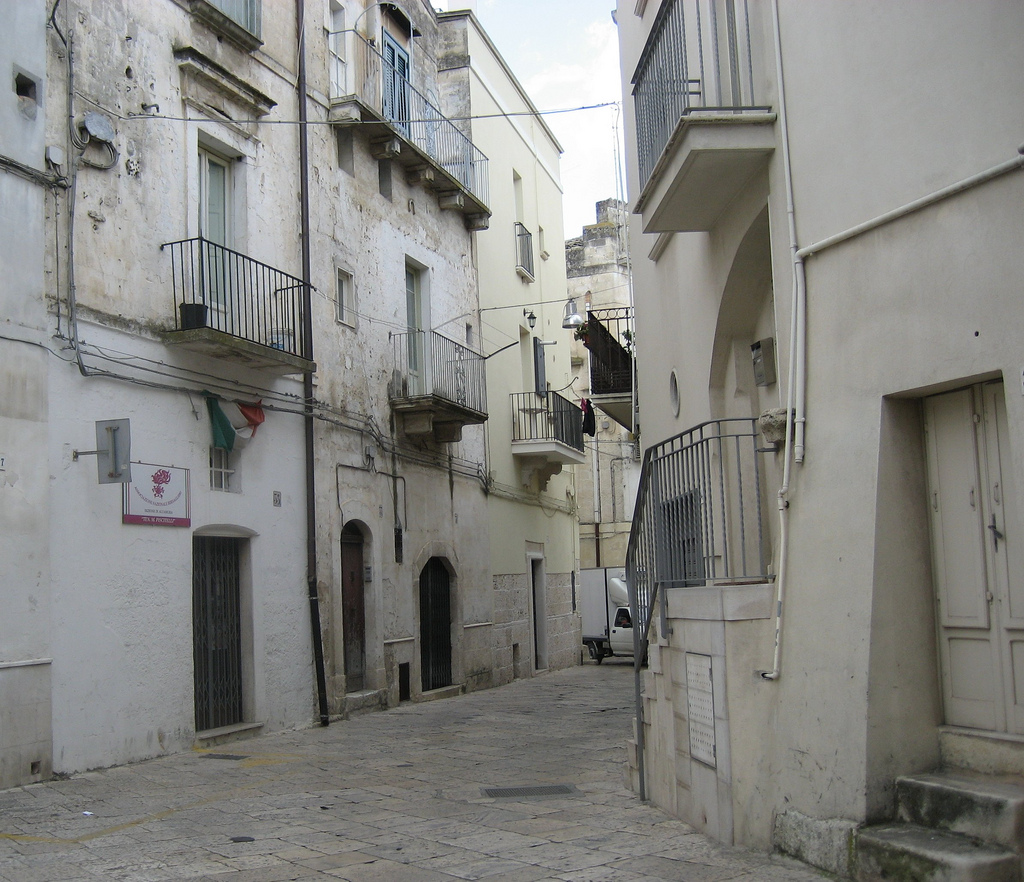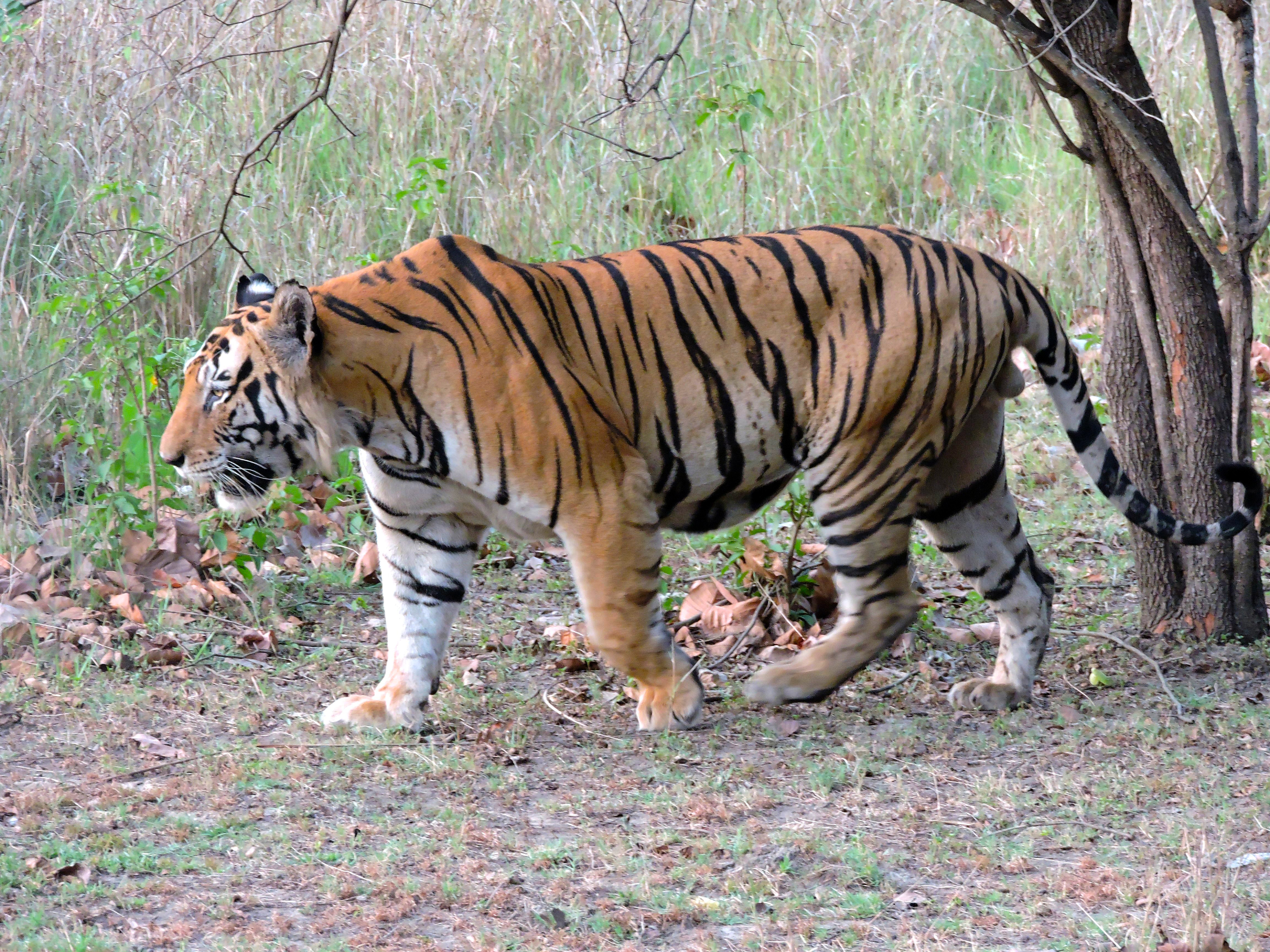|
Yolande Of Valois
Yolande of Valois (23 September 1434 – 23 August 1478), also called Yolande of France, was Duchess of Savoy by marriage to Duke Amadeus IX of Savoy, and regent of Savoy during the minority of her son Philibert I of Savoy from 1472 until 1478. Life Yolande was a daughter of King Charles VII of France, "The Victorious," and Marie of Anjou. She was named after her grandmother, Yolande of Aragon. At the age of two, Yolande was betrothed to Louis, Duke of Savoy, the agreement being signed at Tours. Yolande married Duke Amadeus IX of Savoy in 1452. After her wedding, she brought three chests of books with her. Yolande's husband became duke of Savoy in 1465, making her duchess. Her husband's retiring disposition and epilepsy left her in control of the state, to struggle with the Savoyard barons. Regency After the death of her spouse in March 1472, Yolande became regent for her son Philibert until her own death. Like her brother Charles, she was an ally to Charles, Duke of Bu ... [...More Info...] [...Related Items...] OR: [Wikipedia] [Google] [Baidu] |
Guillaume Fichet
Guillaume Fichet (; 21 September 1433 – c. 1480) was a French scholar, who cooperated with Johann Heynlin to establish the first printing press in France (Paris) in 1470. Biography He was born at Le Petit-Bornand-les-Glières, in Savoy. He studied in Paris between 1450 and 1454 and then followed up on his studies in Avignon. According to his own account as mentioned in his ''Rhetorica,'' he taught liberal arts, scriptures and rhetoric since the mid 1450s. In 1467, he was elected rector of the Sorbonne. In 1469 he and Heynlin installed the first press ever set up in France. They brought from Basel three printers: Michael Friburger, Ulrich Gering and Martin Crantz. He was in charge of the library of the Sorbonne between 1469 and 1471. The first book printed was the ''Epistolae'' ("Letters") of Gasparinus Pergamensis (1470). Also Fichet's own works followed, such as his ''Rhetorica'' (1471). The publisher gained recognition by publishing several speeches made by leading Cardinal B ... [...More Info...] [...Related Items...] OR: [Wikipedia] [Google] [Baidu] |
Epilepsy
Epilepsy is a group of Non-communicable disease, non-communicable Neurological disorder, neurological disorders characterized by a tendency for recurrent, unprovoked Seizure, seizures. A seizure is a sudden burst of abnormal electrical activity in the brain that can cause a variety of symptoms, ranging from brief lapses of awareness or muscle jerks to prolonged convulsions. These episodes can result in physical injuries, either directly, such as broken bones, or through causing accidents. The diagnosis of epilepsy typically requires at least two unprovoked seizures occurring more than 24 hours apart. In some cases, however, it may be diagnosed after a single unprovoked seizure if clinical evidence suggests a high risk of recurrence. Isolated seizures that occur without recurrence risk or are provoked by identifiable causes are not considered indicative of epilepsy. The underlying cause is often unknown, but epilepsy can result from brain injury, stroke, infections, Brain tumor, ... [...More Info...] [...Related Items...] OR: [Wikipedia] [Google] [Baidu] |
Charles VI Of France
Charles VI (3 December 136821 October 1422), nicknamed the Beloved () and in the 19th century, the Mad ( or ''le Fou''), was King of France from 1380 until his death in 1422. He is known for his mental illness and psychosis, psychotic episodes that plagued him throughout his life. Charles ascended the throne at age 11, his father Charles V of France, Charles V leaving behind a favorable military situation, marked by the reconquest of most of the English possessions in France. Charles VI was placed under the regency of his uncles: Philip II, Duke of Burgundy; Louis I, Duke of Anjou; John, Duke of Berry; and Louis II, Duke of Bourbon. He decided in 1388, aged 20, to emancipate himself. In 1392, while leading a military expedition against the Duchy of Brittany, the king had his first attack of delirium, during which he attacked his own men in the forest of Le Mans. A few months later, following the ''Bal des Ardents'' (January 1393) where he narrowly escaped death from burning, Char ... [...More Info...] [...Related Items...] OR: [Wikipedia] [Google] [Baidu] |
France
France, officially the French Republic, is a country located primarily in Western Europe. Overseas France, Its overseas regions and territories include French Guiana in South America, Saint Pierre and Miquelon in the Atlantic Ocean#North Atlantic, North Atlantic, the French West Indies, and List of islands of France, many islands in Oceania and the Indian Ocean, giving it Exclusive economic zone of France, one of the largest discontiguous exclusive economic zones in the world. Metropolitan France shares borders with Belgium and Luxembourg to the north; Germany to the northeast; Switzerland to the east; Italy and Monaco to the southeast; Andorra and Spain to the south; and a maritime border with the United Kingdom to the northwest. Its metropolitan area extends from the Rhine to the Atlantic Ocean and from the Mediterranean Sea to the English Channel and the North Sea. Its Regions of France, eighteen integral regions—five of which are overseas—span a combined area of and hav ... [...More Info...] [...Related Items...] OR: [Wikipedia] [Google] [Baidu] |
Genevois (province)
The Genevois () is a former province of the Duchy of Savoy. Its capital is Annecy and other centres include Faverges, Thônes, and La Clusaz. It was bordered by the provinces of Carouge to the north-west, Faucigny to the north-east, and Savoy proper to the south-east and south-west. Although the province took its name from the city of Geneva, the Counts of Geneva were never able to exercise their authority in the city itself, which was ruled by the Bishops of Geneva. The County of Geneva, having passed to the de Thoire et Villars family on the death of Count Robert (the Avignon Pope Clement VII) in 1394, was sold in 1401 to the Counts of Savoy. It was subsequently conceded in appanage An appanage, or apanage (; ), is the grant of an estate, title, office or other thing of value to a younger child of a monarch, who would otherwise have no inheritance under the system of primogeniture (where only the eldest inherits). It was ... to several Savoyard princes before being jo ... [...More Info...] [...Related Items...] OR: [Wikipedia] [Google] [Baidu] |
Charles I Of Savoy
Charles I (28 March 1468 – 13 March 1490), called the Warrior, was the Duke of Savoy from 1482 to 1490 and titular king of Cyprus, Jerusalem, and Armenia from 1485 to 1490. Life Charles was son of Amadeus IX, Duke of Savoy, and Yolande of Valois, daughter of king Charles VII of France. Charles was 17 when Charlotte of Cyprus, titular Queen of Armenia and Jerusalem, surrendered her rights to Cyprus, Armenia, and Jerusalem to him. He was the next legitimate heir in line from King Janus of Cyprus and Armenia. The kingdom itself was held by the Republic of Venice, but the Savoy dynasty continued to claim it. Family Charles married his second cousin Blanche Palaiologina (Bianca di Monferrato) (1472–1519), daughter of William VIII, Marquess of Montferrat, and Elisabetta Sforza. After Charles died from tuberculosis, Blanche was regent of the Duchy of Savoy from 1490 to 1496. They had: #Yolande Louise of Savoy (1487–1499), married Philibert II of Savoy #Charles Jo ... [...More Info...] [...Related Items...] OR: [Wikipedia] [Google] [Baidu] |
Philip Of Hachberg-Sausenberg
Margrave Philip of Hachberg-Sausenberg (1454 – 9 September 1503) was the son of the Margrave Rudolf IV of Hachberg-Sausenberg and Margaret of Vienne. Philip reigned in 1487–1503 as Margrave of Hachberg-Sausenberg and Count of Neuchâtel. From 1466 he called himself Lord of Badenweiler. Family As part of his alliance with France, Philip married Maria of Savoy, daughter of Amadeus IX of Savoy, and one of the nieces of Louis XI, King of France, around 1476 or 1478. With Philip's death, the male line of the Hachberg-Sausenberg family died out. Philip's father, Rudolf IV, had begun negotiations with the senior line of the House of Zahringen (of which Rudolf's Hachberg-Sausenberg line was a cadet branch), which ruled the margraviate of Baden on the possibility of an inheritance treaty. Philip continued the negotiations with Christopher I, Margrave of Baden and on 31 August 1490, they came to an agreement on reciprocal inheritance. The treaty is known as the "Rötteln Matc ... [...More Info...] [...Related Items...] OR: [Wikipedia] [Google] [Baidu] |
Altamura
Altamura (; ; ) is a town and ''comune'' of Apulia, in southern Italy. It is located on one of the hills of the Altopiano delle Murge, Murge plateau in the Metropolitan City of Bari, southwest of Bari, close to the border with Basilicata. , its population amounts to 70,595 inhabitants. The city is known for its particular quality of bread called Pane di Altamura, which is sold in numerous other Italian cities. The 130,000-year-old calcified Altamura Man was discovered in 1993 in the nearby limestone cave called ''grotta di Lamalunga''. History The area of modern Altamura was densely inhabited in the Bronze Age (La Croce settlement and necropolis). The region contains some fifty Tumulus, tumuli. Between the 6th and the 3rd century BC a massive line of megalithic walls were erected, traces of which are still visible in some areas of the city. Ancient city The city was inhabited until around the tenth century AD. Then it was reportedly looted by Saracens. There are no reliab ... [...More Info...] [...Related Items...] OR: [Wikipedia] [Google] [Baidu] |
Frederick Of Naples
Frederick (19 April 1452 – 9 November 1504), sometimes called Frederick IV or Frederick of Aragon, was the last King of Naples from the Neapolitan branch of the House of Trastámara, ruling from 1496 to 1501. He was the second son of Ferdinand I, younger brother of Alfonso II, and uncle of Ferdinand II, his predecessor. A combination of King Louis XII of France and Frederick's famous cousin King Ferdinand II of Aragon had continued the claim of Louis's predecessor, King Charles VIII of France, to Naples and Sicily. In 1501, they deposed Frederick; Naples initially went to Louis, but by 1504 a falling-out led to Naples' seizure by Ferdinand, after which it remained part of the Spanish possessions until the end of the War of the Spanish Succession. Early life and education Born in Naples to Ferdinand I and his first wife, Isabella of Clermont, Princess of Taranto, he succeeded his childless nephew Ferdinand II after the latter's early death in 1496, at the age of 27. He wa ... [...More Info...] [...Related Items...] OR: [Wikipedia] [Google] [Baidu] |
Turin
Turin ( , ; ; , then ) is a city and an important business and cultural centre in northern Italy. It is the capital city of Piedmont and of the Metropolitan City of Turin, and was the first Italian capital from 1861 to 1865. The city is mainly on the western bank of the Po (river), River Po, below its Susa Valley, and is surrounded by the western Alpine arch and Superga hill. The population of the city proper is 856,745 as of 2025, while the population of the urban area is estimated by Eurostat to be 1.7 million inhabitants. The Turin metropolitan area is estimated by the OECD to have a population of 2.2 million. The city was historically a major European political centre. From 1563, it was the capital of the Duchy of Savoy, then of the Kingdom of Sardinia (1720–1861), Kingdom of Sardinia ruled by the House of Savoy, and the first capital of the Kingdom of Italy from 1861 to 1865. Turin is sometimes called "the cradle of Italian liberty" for having been the politi ... [...More Info...] [...Related Items...] OR: [Wikipedia] [Google] [Baidu] |
Tiger
The tiger (''Panthera tigris'') is a large Felidae, cat and a member of the genus ''Panthera'' native to Asia. It has a powerful, muscular body with a large head and paws, a long tail and orange fur with black, mostly vertical stripes. It is traditionally classified into nine Holocene, recent subspecies, though some recognise only two subspecies, mainland Asian tigers and the island tigers of the Sunda Islands. Throughout the tiger's range, it inhabits mainly forests, from coniferous and temperate broadleaf and mixed forests in the Russian Far East and Northeast China to tropical and subtropical moist broadleaf forests on the Indian subcontinent and Southeast Asia. The tiger is an apex predator and preys mainly on ungulates, which it takes by ambush. It lives a mostly solitary life and occupies home ranges, defending these from individuals of the same sex. The range of a male tiger overlaps with that of multiple females with whom he mates. Females give birth to usually two or ... [...More Info...] [...Related Items...] OR: [Wikipedia] [Google] [Baidu] |
Battle Of Grandson
The Battle of Grandson was fought on 2 March 1476, during the Burgundian Wars, and resulted in a major defeat for Charles the Bold, Duke of Burgundian State, Burgundy, at the hands of the Old Swiss Confederacy. Background In 1475, the town of Grandson, Switzerland, Grandson in Vaud, which belonged to Charles the Bold's ally Jacques of Savoy, Count of Romont, Jacques of Savoy, had been brutally taken by the Old Swiss Confederacy, led by the Canton of Bern. After negotiations for the restitution of Vaud failed in January 1476, Charles left Lorraine with the bulk of his army, consisting of about 12,000 men, and advanced through the Jura Mountains towards Vaud. After seizing Yverdon, his army on 21 February captured the town of Grandson and laid siege to Grandson Castle, which surrendered on 28 February. Execution of Grandson Castle garrison After the surrender of Grandson Castle, Charles had its garrison executed by execution by drowning, drowning in Lake Neuchâtel or hangin ... [...More Info...] [...Related Items...] OR: [Wikipedia] [Google] [Baidu] |







